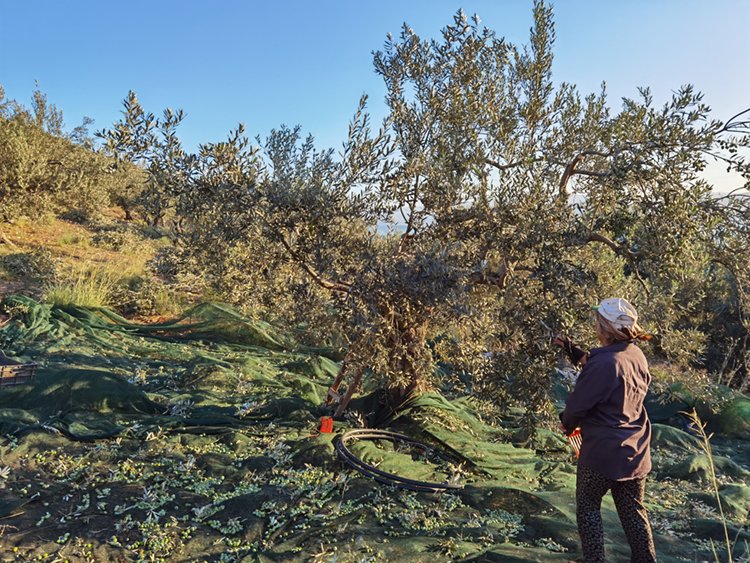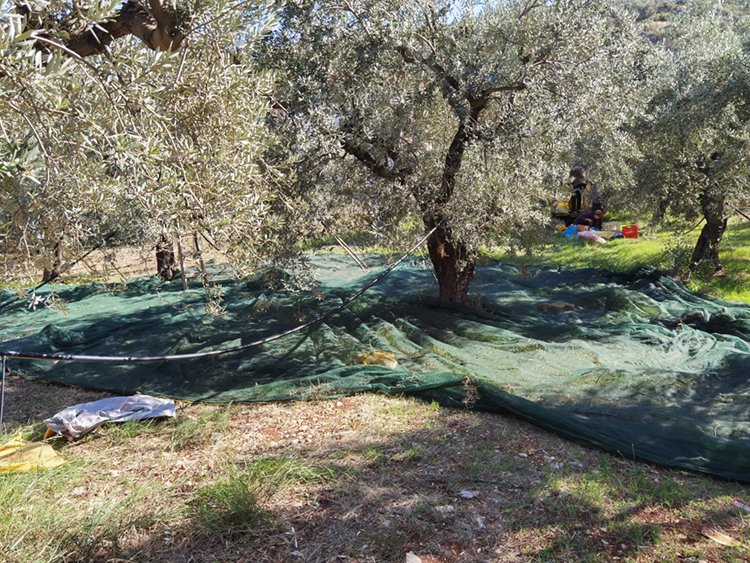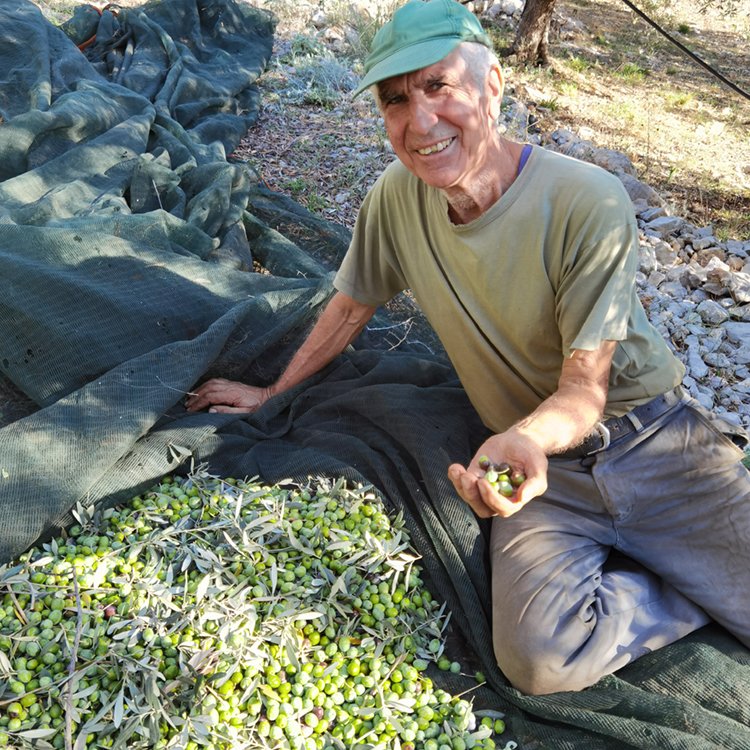Olive harvesting is a family affair

Every autumn it is a tradition for fathers, brothers and sisters who have olive trees, to meet along with their families to work all together in the fields to extract their oil. They do not treat it as a chore but it is a moment of joy to collect the efforts of the year.
The reasons for this tradition are not exclusively financial. It is certainly unprofitable to pay workers wages but one important reason is pruning. The owner wants to prune his trees himself and not entrust them to any random pruner of dubious ability. Pruning precedes harvesting anyway, you can't harvest an unpruned tree, so everything is done together. He also cuts the undergrowth, the offshoots that grow at the bottom of the trunk and turn the tree into a bush that makes it unproductive.
Workers gather in the field after sunrise. They wear old clothes and the women can wear a headscarf that covers all the hair so it doesn't get dirty. The pickup truck is necessary to load the sacks. Whoever owns a pickup truck contributes it.
I have harvested in plains, mountains, terraces and in ravines. The best of course is the mountain because you have a view and cleaner air while the plain has humidity and mud. Once I had been to my cousin's fields that were hard to reach where you could only go by footpath. The transport was undertaken by the grandmother's mule on which my cousin knows how to tie the sacks to the saddle.

Nets laid under the olive trees
For harvesting you need ladders, saws, combs, nets, crates and sacks. First the nets are spread under the tree, the ladder is placed for someone to climb up and the harvesting begins. Saws and combs get to work and with it many discussions between family members.
The olive tree is also called a blessed tree because the fruit does not spoil in the cold, it yields good quality firewood and the leaves are eaten by sheep and goats.
At 11:00 and 14:00 there are breaks for rest and food. The menu includes homemade food. In the old days, when she could afford it, my grandmother used to bring at 11:00 a hot pot, usually with kapama potatoes. My aunts and mother had prepared garlic dip, homemade olives, homemade wine, kefalotiri, and even the bread was from my aunt's traditional wood oven. As simple as the food may seem at that moment it has a different taste, I don't know why maybe it is the combination of fresh air, physical effort and good mood that opens the appetite.

The only thing that can stop harvesting is torrential rain because it is impossible to harvest a wet tree, as soon as the branches move the water falls on you. If it rains lightly you wait for it to stop.
I also have the opportunity to visit places that I wouldn't otherwise visit, such as my grandmother's ancestral home and my cousins' ancestral home in the mountains of Xiropigado, Arcadia. These houses are located in fields as was the practice of the old times. In a very old grandmother's hut I discovered old wooden weaving tools as well as a legend of the Second World War, the infamous Wehrmacht-Einheitskanister fuel canister of the German conquerors that revolutionized the transport of fuel on the battlefields.
The old stories I hear are also worth it. My grandmother told stories of poverty and hardship in her youth while my aunt told stories from the 70s when she was an immigrant to Canada. They also explain to me how they used to harvest the olives with the templa, that is the stick, without nets and they picked them by hand from the ground. The olive that is on the ground and not on the net is called hamoloi, meaning down. My grandmother used to pick even the smallest ones with her hands, which she called kokoloi.
As soon as the tree gets empty of olive fruit the nets are collected and the fruit is separated from the leaves. We want the fruit to not have a large stem or leaves because at the olive press it gets out of production. This is followed by bagging, pouring it from the nets into sacks and finally loading into the pickup truck. The fruit does not stay in the sack for days so the harvest is immediately delivered to the olive press.
Harvesting ends in the afternoon before 17:00 because then it gets dark. This is followed by rest and sleep at home and as the days progress, as soon as someone finishes his own fields he has the obligation to go to his relatives in order to repay the work. For those who have many olive trees harvesting can take up to 2 months.






